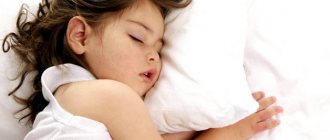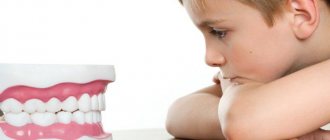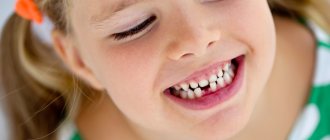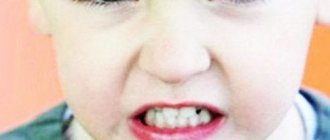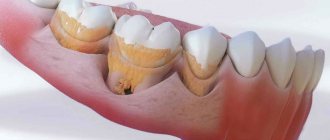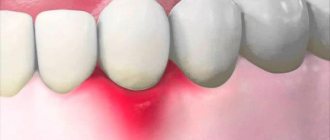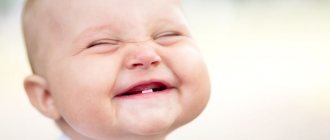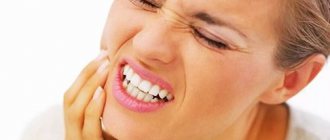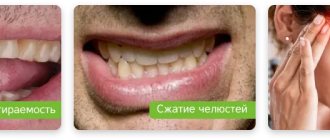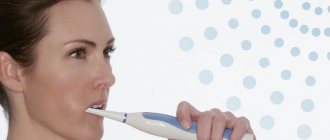Teeth grinding (bruxism) is a common problem in children and a cause of concern for parents. This phenomenon does not apply to diseases. This is a symptom that signals various malfunctions in the endocrine, digestive and nervous systems of the child’s body. Here it is necessary to pay attention to other changes in the child’s behavior. Only a doctor can determine the exact cause after a thorough examination.
In this article we will try to find out why a child may grind his teeth, how dangerous it is, and what to do in this case.
What is bruxism and its manifestations
Bruxism is a pathological condition that occurs due to excessive clenching of the jaws.
By the age of 5 years, teeth grinding occurs in almost 50% of children. This occurs involuntarily and is associated with a spasm of the masticatory muscles. Usually the pathology occurs at night, in attacks of 10-15 seconds. Attacks may recur during the daytime. At the same time, daytime teeth grinding causes more concern for parents, since it is more noticeable.
Reference!
Isolated cases of teeth grinding are not dangerous and do not require intervention. If the attacks become chronic, you need the help of a pediatrician.
In addition to grinding teeth, a child may experience the following manifestations of pathology:
- headache;
- daytime drowsiness, lethargy;
- neck pain;
- tearfulness;
- tooth sensitivity is the result of abrasion and damage to the enamel;
- restless sleep with frequent awakenings;
- congestion in the ears.
Dentists identify a triad of symptoms in childhood bruxism (up to 5 years). These are erosive wear of baby teeth, malocclusion and narrowing of the dental arches. Teeth grinding usually goes away on its own when a child reaches puberty. Teeth grinding is a rare occurrence among teenagers and young adults.
GRINDING OF TEETH IN YOUR SLEEP – ARE WORMS TO BE TO blame?
Grinding your teeth in your sleep has an official medical term – bruxism. Doctors do not consider this phenomenon a disease; it would be more accurate to call it a condition that can arise for various reasons. For a long time, even educated people seriously believed in the myth that bruxism is caused by helminthic infestation.
Mothers passed on to each other by word of mouth advice to give their child an anthelmintic drug. However, in reality, teeth grinding at night has nothing to do with worm infection. The authoritative pediatrician Dr. Komarovsky has repeatedly tried to debunk this misconception. Worms can be present in the body of any child, regardless of whether he grinds his teeth or not.
In the case of helminthic infestation, the symptoms will be completely different:
- stomach ache;
- headache;
- unstable appetite;
- attacks of nausea and vomiting;
- bowel dysfunction (constipation alternating with diarrhea);
- itching in the anus.
The baby's skin may become pale and dark circles appear under the eyes. The child experiences weakness and shows irritability. A blood test can indirectly confirm helminthic infestation. Worm eggs are detected during clinical examination of stool.
As for bruxism, it is caused by various pathological conditions not related to parasitic infection. You can get rid of this symptom in a child only by eliminating the original cause, but this must be done. In some cases, children grind their teeth so much that they wear them down and this becomes a serious problem. Sometimes parents hear a terrible grinding sound even from the next room.
Teeth grinding is caused by repetitive movements of the lower jaw and chewing muscles. Bruxism is divided into nighttime (uncontrolled), daytime (partially controlled) and combined. The pathology occurs in approximately one third of all preschool children. Currently, bruxism has not been sufficiently studied, but work in this direction is constantly being carried out.
Causes of pathology
The exact causes of pathological teeth grinding have not been fully elucidated. In most cases, attacks occur at night, so sleep disturbances are a common cause. In children, this is associated with hypertrophy of the tonsils and adenoids, which makes nasal breathing difficult and leads to apnea (suspension of breathing during sleep). Obesity is also a provoking factor.
Other possible reasons why a child may grind their teeth:
- Incorrect deep bite.
- Individual characteristics of the inclination of the lower jaw.
- Nervous tension, emotional overexcitement.
- Hereditary predisposition.
- Neurological or endocrine disorders.
- Teething.
The causes and manifestations may vary depending on what time of day bruxism occurs.
Night grinding of teeth
If during sleep you notice several attacks, and at the same time the child behaves restlessly (breathing quickens, pupils move actively, talks), then the reason is emotional overexcitement. More often this manifests itself in emotionally sensitive children, overly active or with hyperexcitability syndrome.
Nocturnal bruxism can also be triggered by stress - moving to a new apartment, entering kindergarten, parental divorce, or frequent scandals at home. During the daytime, the child tries not to show his emotions and tension accumulates, and at night it “splashes out” through clenching his jaws and grinding his teeth.
In some cases, the provocateur may be a regular filling that was installed incorrectly. It may prevent the jaw from closing tightly, and the child is too young to tell. Difficulty nasal breathing and snoring of a child during sleep are a sign of problems with the adenoids. In this case, you need to consult an ENT doctor.
Teeth grinding during the daytime
During the day, the baby may experience a spasm of the chewing muscles due to tooth eruption. It is also possible to develop an incorrect bite, which leads to discomfort and clenching of the jaws. In these situations, you need to show the child to the dentist.
During a stressful situation, involuntary grinding of teeth is possible. Observe when this phenomenon occurs in the child during the day, and what precedes it. For frequent attacks, consultation with a child psychologist or neurologist is recommended. Problems with the digestive and endocrine system can also cause attacks of daytime bruxism.
Treatment of bruxism at the dentist
Depending on the pathology, either orthodontic treatment of malocclusion or restoration of the height of worn teeth using dental prosthetics with crowns or ceramic onlays can be used. Remineralization therapy and fluoridation are also used to preserve hard dental tissues.
Dental treatments alone cannot stop bruxism; they only protect teeth from further decay and premature wear.
- Splints and release guards are used during sleep to protect teeth from excessive clenching and grinding. They are usually made from acrylic or other soft and lightweight materials.
- Dental prosthetics with artificial crowns or ceramic onlays are used for severe forms of bruxism (with significant abrasion of the chewing surfaces of the teeth). Crowns and onlays perform a restorative and protective function, protecting teeth from further destruction.
- Selective grinding of teeth is aimed at eliminating increased occlusal stresses by creating correct contacts between the upper and lower teeth. This corrects the incorrect relationship between the chewing surfaces of the upper and lower teeth.
What about worms?
There is a common belief that teeth grinding may be a sign of a parasitic disease. This is due to the fact that preschool children often suffer from helminths. And it is precisely at this age that teeth grinding is typical. Also, this assumption was explained by the fact that when infected with helminths, salivation increases. This provokes clenching of the jaws, which leads to teeth grinding. But according to specialist research, this is just a coincidence. A direct connection between the presence of worms in a child and bruxism has not been identified.
Types of parasites
There are a great many organisms that live off of us. Currently, more than 200 species of parasites have been identified in humans. Here are the most common ones.
Toxoplasma
Affects the nervous system, liver, spleen, skeletal muscles and myocardium. Most dangerous for pregnant women. If the expectant mother gets sick with toxoplasmosis, the child will most likely be born with deformities.
Amoeba
Most often it causes damage to the colon with prolonged diarrhea. According to WHO, 10% of the world's population suffers from amebiasis.
Alveococcus
Grows into the tissue of the host organ, like a malignant tumor. The liver and brain are often affected, where the size of the formation caused by the parasite can reach 15 cm in diameter.
Schistosoma
Lives and multiplies in the blood of a sick person. Can pass through the walls of blood vessels, entering the bladder and intestines. The embryos located inside the eggs secrete a specific poison that destroys tissue and poisons the body.
Pinworms
Most often found in children, they inhabit the lower parts of the small intestine and part of the large intestine. If pinworms clog the appendix, it can cause an attack of appendicitis. Digestion and absorption of food are disrupted, and the level of important microelements in the blood of patients is significantly reduced.
Roundworms
Ascaris larvae in the human body can lead to serious disruptions in the functioning of the immune system. At an early stage of the disease, there may be an increase in body temperature, a dry cough, a rash, and sometimes an enlarged liver. Having settled in the intestines, roundworms secrete poisons that are strong allergens.
Is the pathology dangerous and what could be the consequences?
Bruxism does not lead to serious health problems, and certainly does not threaten the development and life of the child. Most of all, parents are worried about this phenomenon, and they begin a hospital quest in search of the cause. As a rule, the child grows out of this problem without the participation of a doctor, if it is not chronic. This is due to the development of the chewing apparatus, eliminating problems with the adenoids and normalizing sleep.
If teeth grinding occurs frequently over several months, then a doctor’s consultation is necessary. Otherwise, bruxism can lead to the following consequences:
- thinning of tooth enamel and increased sensitivity of teeth;
- problems with fillings, they will crumble and crack;
- malocclusion;
- loosening of baby teeth;
- headaches and decreased concentration;
- overload of the maxillofacial joint;
- spasm of the facial muscles.
Excessive tooth wear increases the risk of bruxism during adolescence and young adulthood. Also, severe uncontrolled spasm of the jaws can lead to dislocation of the temporomandibular joint.
Treatment of bruxism in adults
By adolescence, bruxism in many children goes away on its own. Teeth clenching is not severe in most adults, so therapy may not be needed at all. However, in order to avoid serious problems, you should consult your doctor.
When treating bruxism, it is necessary to determine the reasons that influenced its development. Sometimes you may need to consult a psychotherapist who will prescribe medications to normalize sleep and relieve increased anxiety.
What to do if your child grinds his teeth
Pay attention to when attacks most often occur - during the day, at night, at home or in a public place. Also record other disturbances in the child’s behavior and health complaints. Consult a pediatrician or pediatric dentist for advice. Take the necessary tests and undergo examinations prescribed by your doctor.
The following tips will also help you cope with bruxism:
- Improve the psychological climate at home. Try not to quarrel with loved ones in front of your child, talk to your child more often and ask him to talk about his feelings and fears.
- Do not burden your child with various early development clubs.
- Organize a proper daily routine with mandatory daytime sleep. The child’s nervous system needs a break during the day, even if he himself seems active and does not want to sleep. 1-2 hours before bedtime, take a bath with relaxing additives and read a book. Active games should be prohibited.
- Review your diet. Add solid vegetables to your menu to provide exercise to your chewing muscles.
If your baby often catches colds or suffers from a chronic runny nose or nasal congestion, then you need to check the adenoids. If the child has hyperactivity syndrome and emotional excitability, it is recommended to visit a psychologist or neurologist.
PREVENTION OF TEETH GRINDING
Since doctors have established a relationship between bruxism and the state of the nervous system, it is necessary to organize the baby’s routine in advance so that there are no prerequisites for overexcitation and stress. The child needs daily walks for 3-4 hours. This time can be divided into 2 stages.
You need to stick to the routine. The baby should eat, walk and sleep at the same time. You should not feed your baby at night. Digestive processes that take place at night will worsen the quality of sleep and make it restless. For the same reason, active games in the evening are not recommended. Let the child frolic on the street during the day; in the evening you can occupy him with quiet games or read him a fairy tale.
Warm baths with the addition of herbal decoction are good for relaxation. The child's nutrition should be complete and varied, fully replenishing the deficiency of vitamins and minerals. It is advisable to give your baby more fresh vegetables and fruits. It is better to exclude sweets from your diet.
If the pathology in the form of teeth grinding was identified in a timely manner and the child received appropriate treatment, the prognosis is favorable. In the future, it is necessary to monitor compliance with the regime and the psycho-emotional state of the baby. Children undergoing treatment for bruxism should visit the dentist at least 2 times a year. The doctor will be able to immediately notice the return of symptoms if this happens.
Treatment and prevention
There is no specific treatment for bruxism, since this pathology is not an independent disease. The main task of the doctor is to identify the cause of the pathology. The treatment regimen will depend on this. To eliminate teeth grinding, drug therapy, physical therapy, correction of the emotional state and dental methods are used, for example, installing protective mouthguards on the teeth.
Main methods of therapy:
- Normalization of sleep with the help of sedatives.
- Taking B vitamins, preparations with magnesium and calcium.
- Treatment of adenoids.
- Psychological correction - art therapy, music therapy, sandbox. Working with parents in the presence of intra-family conflicts.
To relieve muscle tension, you can use pine baths, massage and exercise in the pool.
The dentist helps protect teeth from abrasion by installing a special protective mouth guard. It is made of soft material, so it does not cause discomfort. It can only be worn at night. The most optimal way is to make mouth guards based on an individual impression. But you can also buy ready-made ones. This method is only suitable for schoolchildren.
Also, if there is damage to the enamel and sensitivity, fluoridation and remineralization of teeth are performed. If necessary, caries treatment is carried out.
An orthodontist will help you correct your bite. For this purpose, plates and bracket systems are used. The orthodontic design is selected individually, based on the severity of the problem and the age of the child. A malocclusion can be easily corrected when the jaws have not yet fully formed. Therefore, the sooner you visit a pediatric orthodontist, the better the result will be.
How to prevent bruxism: recommendations for parents
The main preventive measure is to create a comfortable, calm and trusting atmosphere at home. Even if you think that everything is fine in your family, your child may think differently.
Try to help your child cope with emotions. Communicating with animals, drawing a picture of a problem, and using toys as interlocutors helps a lot.
Do not ignore preventive examinations from specialists. Treat caries promptly. Try to enrich your child’s diet with vitamins, do not chop food. Walk outdoors every day.
A single grinding of teeth is not a cause for concern. But if attacks of bruxism become more and more frequent, then consult a doctor to identify the cause.
Comprehensive treatment of bruxism
- Relieving pain in the masticatory muscles and correcting the tone of the masticatory muscles using splints and disconnecting mouth guards, as well as Botox injections into the masticatory muscles.
- Treatment of dysfunction of the mandibular joint with conservative or surgical methods. The choice of treatment method depends on the severity of the condition. Plastic surgery of the articular disc, arthrolavage of the joint cavity (a minimally invasive surgical procedure consisting of puncture, lavage of the joint and administration of drugs that promote the restoration of joint tissue) and other methods can be used. Physiotherapy (laser, electrophoresis, dynamic currents, massage) is also widely used, relaxing muscles and strengthening ligaments.
- Restoration of dentition after correction of the tone of the masticatory muscles and treatment of dysfunction of the mandibular joint.
